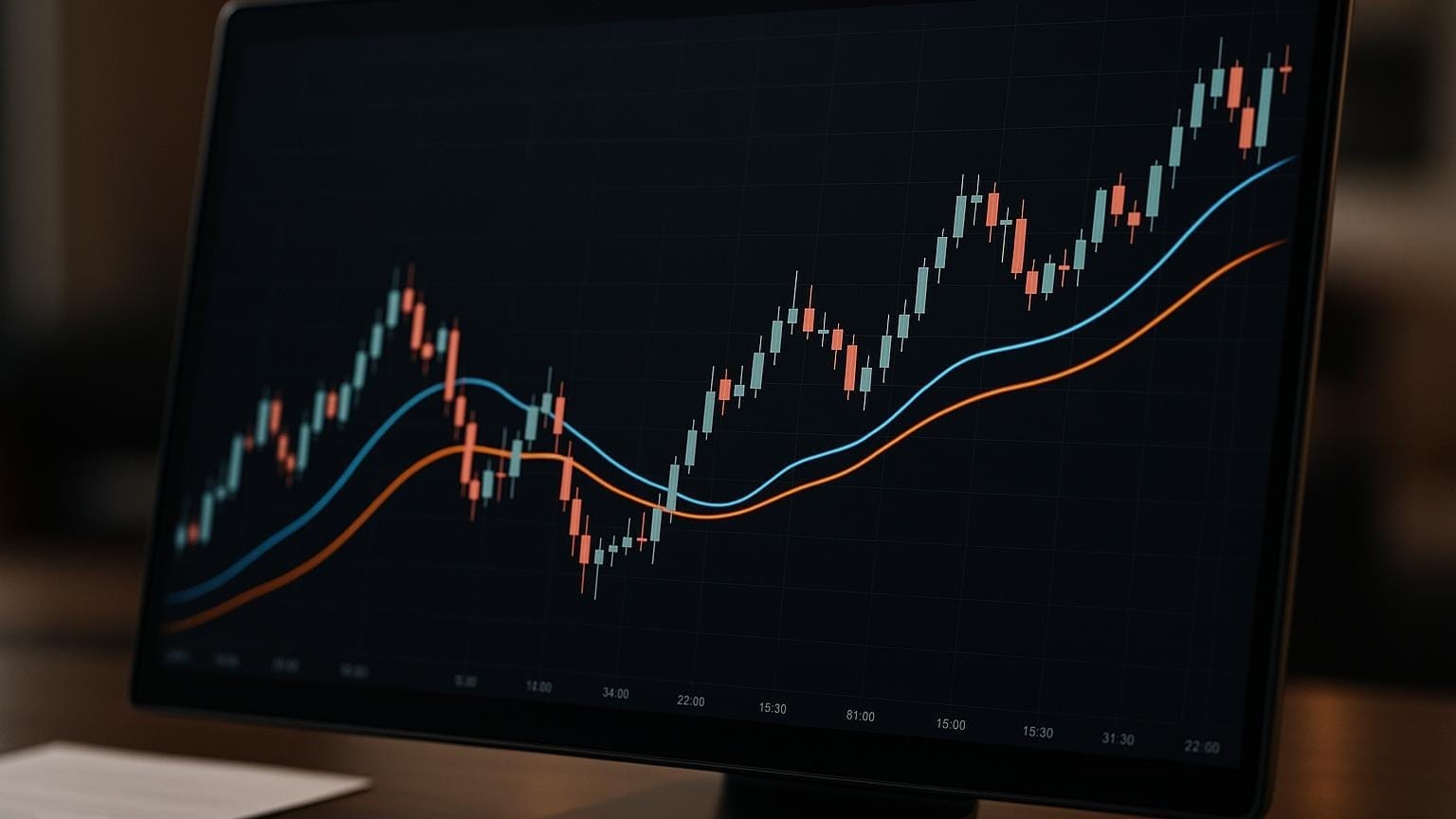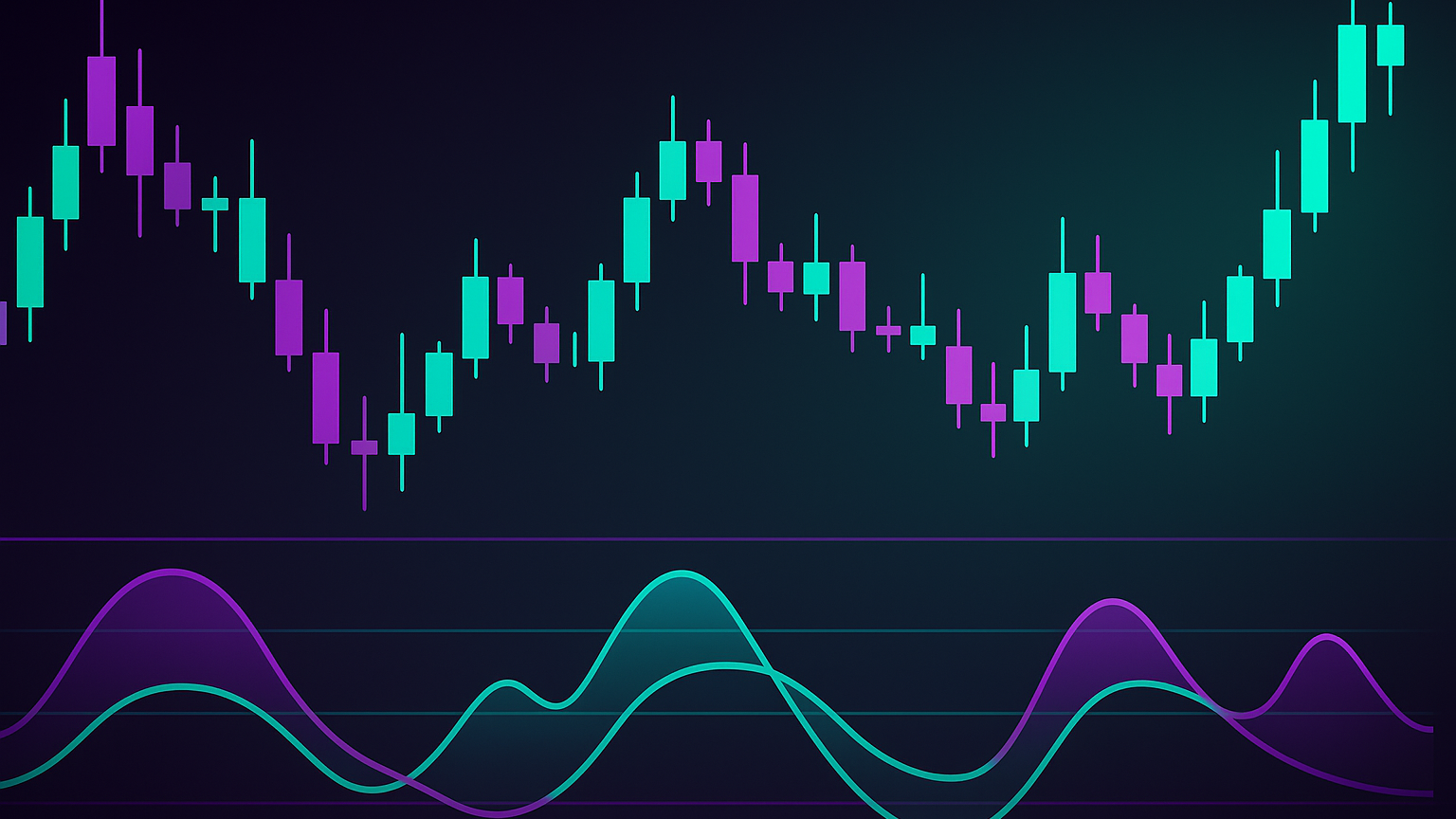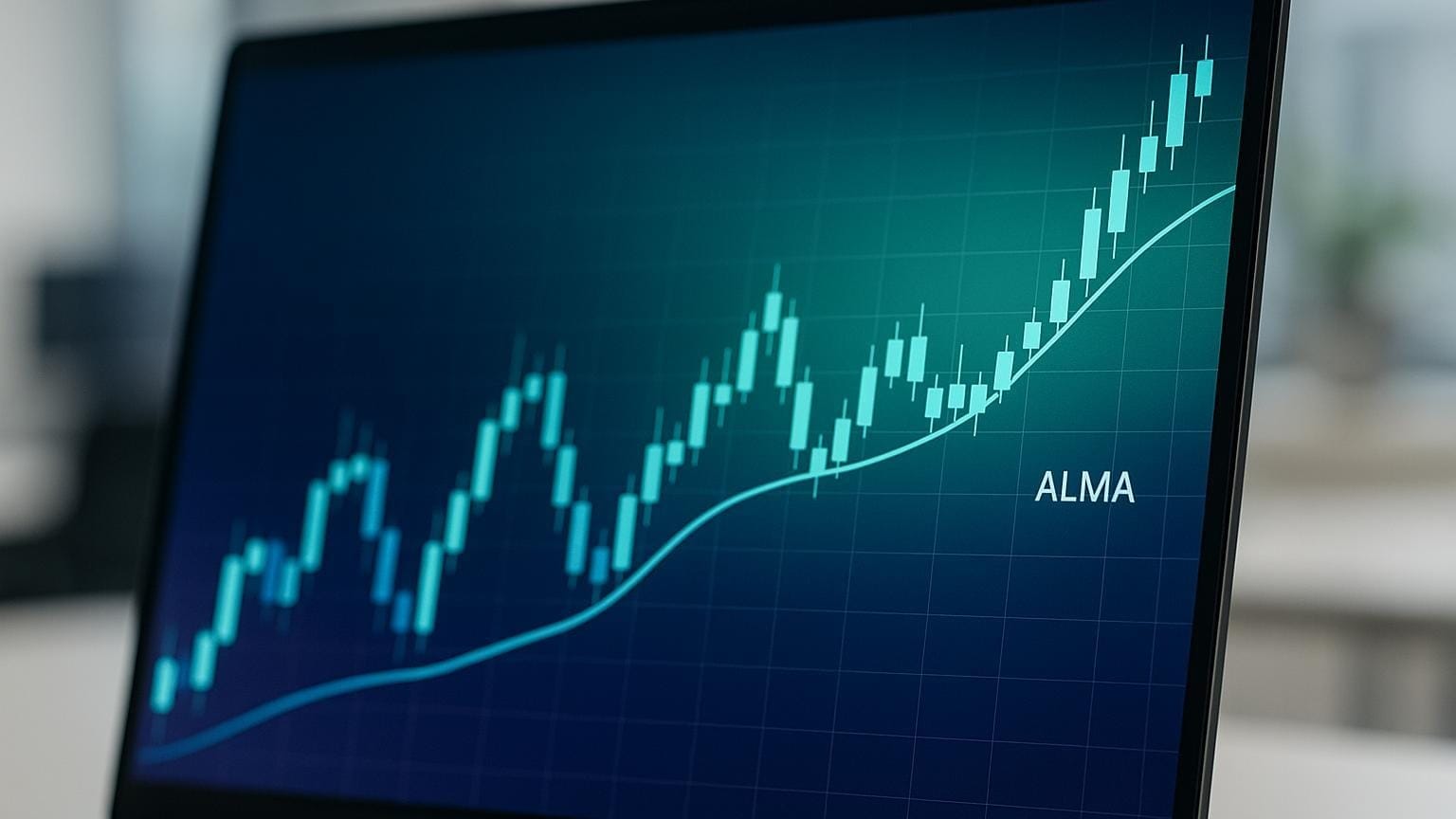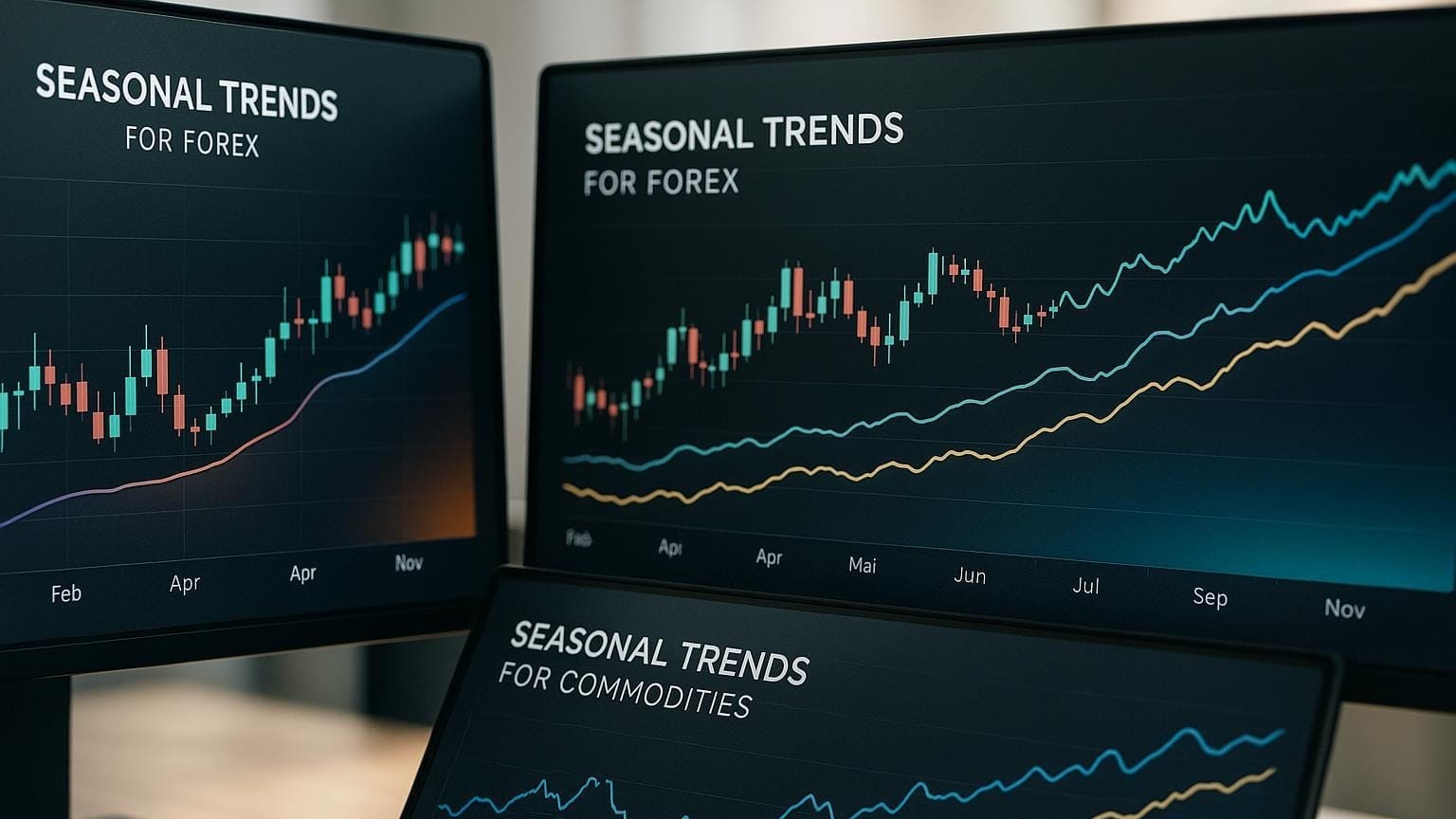Learn how the Double Exponential Moving Average minimizes lag in trend analysis, offering traders faster signals for better decision-making.
Lag in trading signals can cost you opportunities. The Double Exponential Moving Average (DEMA) offers a faster, more responsive alternative to standard moving averages by reducing delay in trend analysis. Introduced in 1994 by Patrick Mulloy, DEMA applies a unique double-smoothing formula that minimizes lag while still filtering out market noise.
Key Takeaways:
- DEMA's Formula: Combines two exponential moving averages (EMA) to balance responsiveness and noise reduction.
- Why It Matters: Faster signals help traders identify trends earlier, manage risks, and make timely decisions.
- Practical Uses:
- Spotting trends and reversals.
- Identifying dynamic support and resistance levels.
- Enhancing entry and exit timing in volatile or trending markets.
- When to Use: Ideal for day traders, swing traders, and during high-volatility or event-driven market conditions.
DEMA's reduced lag makes it a valuable indicator for traders seeking precision and speed in their strategies. Paired with AI Backtesting, it becomes even more effective for optimizing trading performance.
Double Exponential Moving Average Trading Strategy (DEMA)
Mathematical Foundation and Calculation of DEMA
To grasp how the Double Exponential Moving Average (DEMA) operates, it’s important to break down its mathematical structure. The formula is designed to reduce the lag commonly found in standard moving averages, providing a more responsive tool for analyzing price trends.
The DEMA Formula Explained
The formula for DEMA is: DEMA = 2 × EMA − EMA(EMA) [1]. Alternatively, it can be expressed as DEMA(n) = (2 × EMA(n)) − EMA(EMA(n)), where "n" represents the period used in the Exponential Moving Average (EMA) calculation.
- 2 × EMA: This doubles the EMA for the selected period, emphasizing recent price movements.
- EMA(EMA): This involves applying exponential smoothing again to the original EMA, creating a second layer of smoothing that introduces more lag.
- Subtraction: By subtracting EMA(EMA) from 2 × EMA, the formula reduces lag while maintaining the smoothing benefits of the EMA.
Let’s break this down further with a step-by-step example.
Step-by-Step Calculation Process
Here’s how DEMA calculations work in practice, using Apple Inc. (AAPL) stock prices for a 5-period DEMA:
- Day 1: $150.25
- Day 2: $152.10
- Day 3: $151.75
- Day 4: $153.20
- Day 5: $154.15
- Day 6: $152.80
Step 1: Calculate the first EMA
For a 5-period EMA, the smoothing factor is calculated as 2 ÷ (5 + 1) = 0.333. The initial EMA is typically based on the simple average of the first 5 days. In this case, the 5-day simple average is approximately $152.29. For Day 6, the EMA is calculated as:
$152.29 + 0.333 × ($152.80 − $152.29) ≈ $152.46
Step 2: Calculate the EMA of the EMA
Next, apply the same smoothing process to the series of EMA values. This creates the second EMA, which has more lag due to the additional layer of smoothing.
Step 3: Apply the DEMA Formula
Finally, use the formula:
DEMA = (2 × EMA) − EMA(EMA)
For Day 6, the DEMA is calculated as (2 × $152.46) minus the EMA of the EMA for Day 6. This results in a more responsive value for Day 6's DEMA.
Comparison: DEMA vs. EMA vs. SMA
Here’s a quick comparison of the three moving averages to highlight their differences:
| Feature | SMA (Simple Moving Average) | EMA (Exponential Moving Average) | DEMA (Double Exponential Moving Average) |
|---|---|---|---|
| Calculation Method | Simple arithmetic average | Weighted average emphasizing recent data | 2 × EMA minus EMA(EMA) |
| Weight Distribution | Equal weight to all data points | Exponentially decreasing weights | Increased focus on recent prices |
| Lag Characteristics | Highest lag | Moderate lag | Much lower lag |
| Noise Sensitivity | Least sensitive | Moderately sensitive | Slightly sensitive to market noise |
| Best Use Case | Long-term trend confirmation | General trend analysis | Quick detection of trend changes |
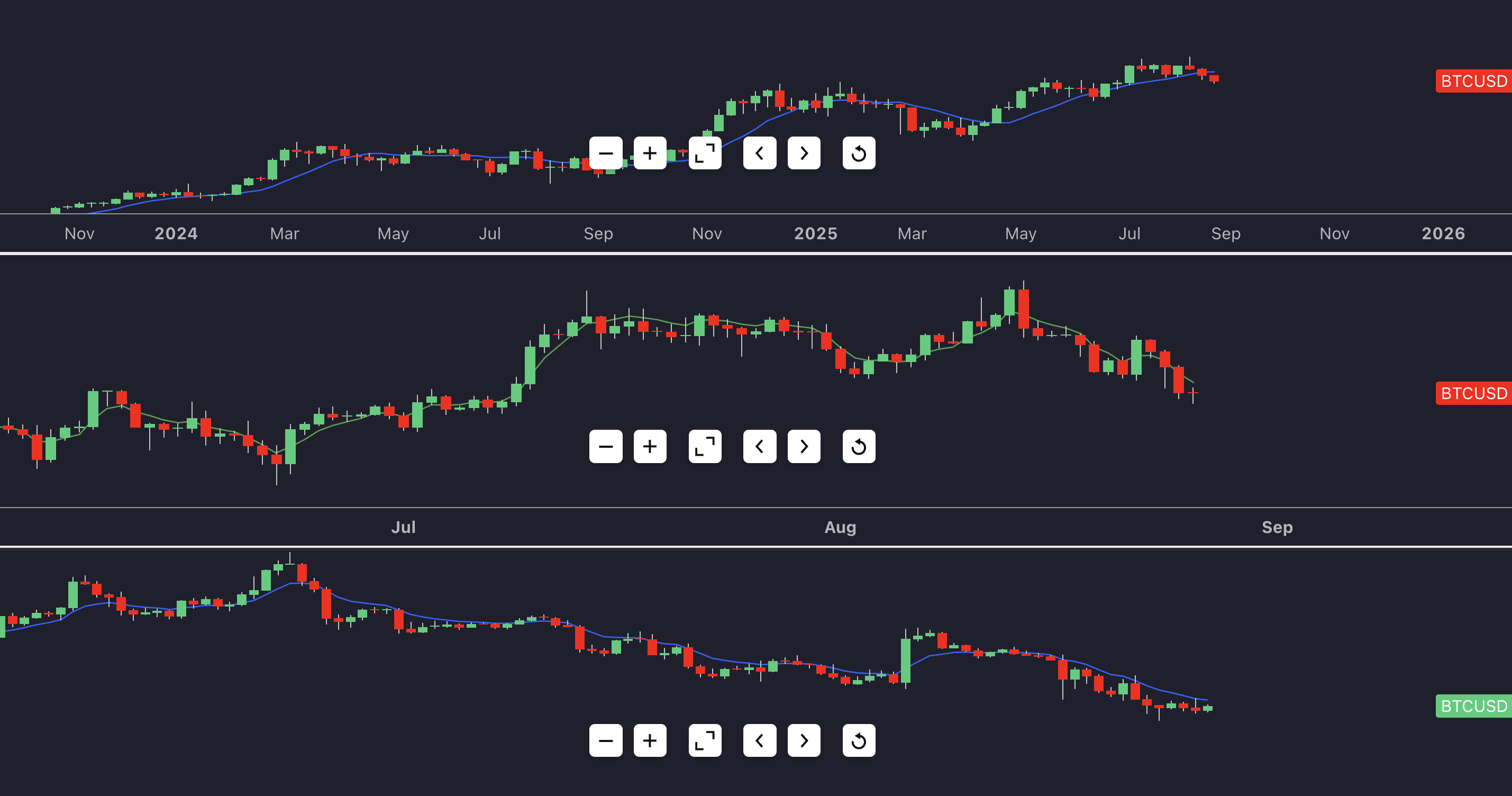
This table underscores how DEMA minimizes lag while retaining the benefits of smoothing. Its responsiveness makes it a valuable indicator for traders looking to identify trend changes quickly and accurately.
How DEMA Reduces Lag: Mechanisms and Benefits
The Double Exponential Moving Average (DEMA) tackles the issue of lag by employing a mathematical technique that reduces the delay commonly associated with traditional moving averages.
Lag Reduction Through Double Smoothing
DEMA achieves its lag reduction by combining two Exponential Moving Average (EMA) calculations in a unique way. First, it doubles the value of a standard EMA, making it highly responsive to recent price changes. However, to avoid introducing excessive noise, it applies a second layer of smoothing by calculating an EMA of the first EMA (EMA(EMA)). The final step subtracts this smoothed component from the doubled EMA, effectively reducing lag while maintaining the smoothing effect. This approach keeps DEMA closer to the current price action, allowing it to respond more quickly to shifts in market trends.
This advanced smoothing process not only minimizes lag but also provides practical benefits for traders.
Key Benefits of Using DEMA
The reduced lag in DEMA offers several advantages for traders, especially in fast-moving markets where timing is critical.
- Faster trend identification: DEMA can highlight trend reversals more quickly than traditional moving averages. This is particularly valuable during significant market events, like earnings reports or Federal Reserve announcements, where quick reactions are essential.
- Improved signal timing: By capturing trend changes closer to their onset, DEMA helps traders enter and exit positions more effectively, potentially improving risk-to-reward ratios compared to slower-moving averages.
- Better performance in sideways markets: DEMA's design filters out market noise while remaining sensitive to genuine trend shifts, making it more reliable in choppy conditions.
- Enhanced momentum detection: Changes in DEMA's slope or direction can signal acceleration or deceleration in price movements, offering early warnings of potential trend shifts.
- Increased sensitivity: While DEMA reacts quickly to market changes, it may also pick up on noise in highly volatile stocks or during low trading volume periods. In such cases, combining DEMA with other indicators or confirmation signals can help reduce false positives.
When to Use DEMA in Trading
DEMA shines in specific market conditions and trading strategies, making it a versatile indicator for active traders.
- High-volatility markets: In environments with rapid price swings, DEMA's quick response ensures traders can adapt to sudden changes.
- Trending markets: DEMA works well in markets with a clear directional bias, helping traders stay aligned with the trend while providing timely exit signals when trends begin to weaken.
- Short- to medium-term strategies: Day traders and swing traders benefit from DEMA's responsiveness, which supports quicker decision-making and execution.
- Event-driven trading: During events like earnings releases or major economic updates, DEMA's reduced lag helps traders react swiftly to evolving conditions.
However, caution is advised during low-volume periods, such as holiday weeks, as reduced market participation can lead to false signals. Similarly, in range-bound markets without a clear direction, DEMA may produce conflicting signals that require additional confirmation.
In forex trading, where markets operate 24/7 and trends can shift frequently, DEMA's responsiveness makes it especially useful for currency traders looking to capitalize on fast-moving opportunities.
Practical Applications of DEMA in Trend Analysis
Building on DEMA's ability to reduce lag, its practical uses make trend analysis more precise. Knowing how to apply DEMA effectively can improve both trend identification and market timing.
Using DEMA for Trend Identification
DEMA is a handy indicator for spotting overall market trends. When prices stay above a rising DEMA line, it typically points to a bullish trend. On the flip side, when prices remain below a falling DEMA, it suggests a bearish trend.
The combination of price positioning and the direction of the DEMA line can strengthen trend signals. For example, upward momentum is confirmed when prices are above a rising DEMA. Similarly, downward momentum is validated when prices are below a falling DEMA.
To refine accuracy in volatile markets, consider using two DEMA periods simultaneously: one short and one long. A shorter DEMA, like a 20-day, captures short-term movements, while a longer DEMA, such as a 50-day, highlights the broader trend. When both lines move in the same direction and prices align with them, the trend signal becomes more dependable.
Crossovers between different DEMA periods can also signal trend shifts. For instance, a shorter DEMA crossing above a longer DEMA while both are rising confirms a bullish trend. Conversely, a downward crossover reinforces bearish momentum.
In sideways markets, DEMA can sometimes give mixed signals. During these periods, paying attention to the slope of the DEMA line can be more helpful than relying solely on price crossovers. A flattening DEMA often hints at market consolidation, signaling traders to wait for clearer trends to emerge.
Signals for Entry and Exit Points
DEMA provides actionable trading signals by analyzing price movements and directional changes. For example, when prices trade above the DEMA for an extended period, it could indicate a buying opportunity. Conversely, trading below the DEMA might suggest a short position.
However, relying on single DEMA crossovers can lead to false signals, especially in choppy markets. To improve the reliability of these signals, pair DEMA with other indicators. For instance, combining DEMA with the Relative Strength Index (RSI) can confirm momentum. A bullish DEMA crossover, coupled with RSI moving above 50, can strengthen the case for entering a long position.
Volatility indicators like the Average True Range (ATR) can also complement DEMA. These indicators help set appropriate stop-loss levels by accounting for market volatility. Wider stops may be needed in highly volatile markets, while tighter stops work better in calmer conditions.
The slope and changes in the direction of DEMA itself can signal shifts in the market. For example, when DEMA flattens after a strong trend, it often signals a potential reversal or consolidation. A sharp change in the slope might indicate acceleration or deceleration in the trend.
For exits, watch for price movements that decisively break the DEMA line. For instance, closing below a rising DEMA could signal the end of a long position, especially if the DEMA starts to flatten or slope downward.
Looking at multiple timeframes can further validate DEMA signals. For example, a buy signal on a daily chart is more convincing if the weekly DEMA also shows bullish momentum. This approach helps filter out short-term noise and focus on higher-probability setups. Beyond entry and exit points, DEMA is also valuable for identifying support and resistance levels.
Support and Resistance
DEMA's quick responsiveness makes it an excellent indicator for identifying dynamic support and resistance levels. Unlike static horizontal lines, DEMA adjusts with price action, offering more relevant reference points for trading decisions.
In an uptrend, DEMA often acts as a support level, with prices bouncing off the line. These bounces can mark potential reversal points, and the steeper the DEMA slope, the stronger its support tends to be.
In a downtrend, DEMA serves as resistance, with price rallies typically stalling near the line. These resistance levels can signal potential short entries or moments to exit long positions, especially when the DEMA maintains a clear downward slope.
When prices deviate significantly from DEMA, it can indicate overbought or oversold conditions. However, in strong trending markets, prices may stay extended from DEMA for longer periods.
DEMA is particularly useful for intraday trading, as it quickly adapts to price movements. Shorter DEMA periods can help day traders pinpoint key support and resistance levels within a single trading session, aiding in precise entry and exit decisions.
If DEMA fails to hold as support or resistance — such as when prices decisively break below DEMA support in an uptrend or above DEMA resistance in a downtrend — it could signal a trend reversal or an acceleration in the opposite direction. These moments often provide critical insights for adjusting trading strategies.
Using DEMA with LuxAlgo Tools
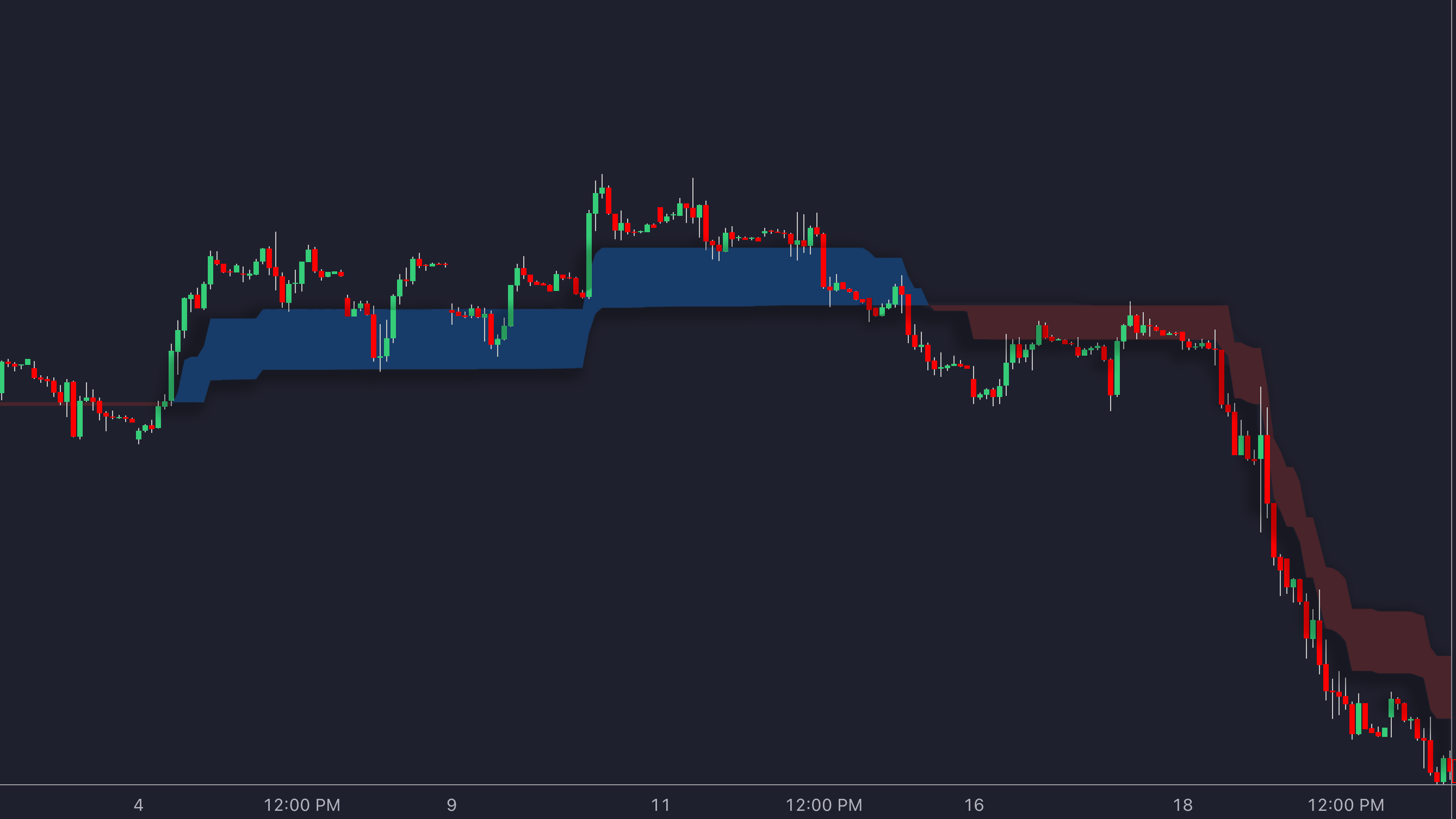
LuxAlgo provides DEMA within several TradingView-based indicators, offering enhanced precision and responsiveness. By leveraging integrated toolkits, AI-powered optimization, and an active community, LuxAlgo helps traders reduce lag and improve trend analysis.
LuxAlgo Toolkits for DEMA
LuxAlgo includes DEMA within Targets for Many Indicators, which lets traders set and manage customizable trade targets guided by DEMA signals, supporting both profit-taking and stop-loss strategies.
The Price Action Concepts (PAC) toolkit augments DEMA analysis with features like auto-pattern detection, volumetric order blocks, and advanced market structure. When DEMA highlights a potential trend shift, PAC can confirm the signal by identifying supporting patterns such as breakouts or reversals, adding confidence to decisions.
The Signals & Overlays (S&O) toolkit pairs well with DEMA by integrating multiple signal algorithms and overlays. Traders can adjust DEMA parameters to fit specific market conditions and gain a clearer, real-time view of trends.
Additionally, the Oscillator Matrix (OSC) toolkit complements DEMA’s trend-following strengths by offering divergence detection and money flow insights. This combination helps traders spot potential reversals early. Each toolkit includes a screener that filters assets based on user-defined criteria across various timeframes.
AI Backtesting and Optimization
LuxAlgo’s AI Backtesting Assistant helps traders build and refine DEMA strategies. The web-based platform lets users test DEMA rules across different tickers and timeframes and quickly surface settings that historically performed better for given market conditions.
The platform can compare alternative DEMA period combinations and evaluate outcomes such as drawdown, win rate, and risk-adjusted return. Insights can then be applied on TradingView with Toolkits and Screeners for execution.
Community and Support for Strategy Development
LuxAlgo’s community provides a collaborative space to share and refine DEMA strategies. Members exchange ideas and receive feedback, while documentation for each toolkit helps traders understand principles behind DEMA and fine‑tune configurations.
Why DEMA is a Game-Changer for Traders
The Double Exponential Moving Average (DEMA) addresses a common challenge in trading: the lag in identifying trends. Traditional moving averages often signal changes too late, but DEMA's double smoothing mechanism delivers faster and more precise signals. For traders, this can mean the difference between seizing a profitable opportunity and missing out.
DEMA’s mathematical structure provides a reliable indicator that minimizes false signals. This is especially crucial in fast-paced markets where even slight delays can affect outcomes. Its ability to offer earlier entry and exit points makes it particularly useful for day traders and swing traders looking to stay ahead.
But DEMA isn’t just about spotting trends. It’s also a valuable indicator for identifying dynamic support and resistance levels. Its crossover signals provide guidance on when to enter or exit trades. When combined with effective risk management, DEMA can help capture more of a trend’s movement while avoiding the choppiness that can undermine slower indicators.
LuxAlgo integrates DEMA into a broader trading framework. Within resources like Price Action Concepts and the AI Backtesting Assistant, DEMA becomes part of a larger system that includes pattern recognition, divergence detection, and multi‑timeframe analysis.
FAQs
What makes the Double Exponential Moving Average (DEMA) better at reducing lag and detecting trends compared to other moving averages?
The Double Exponential Moving Average (DEMA) is crafted to minimize lag, offering a quicker response to price changes compared to traditional moving averages like the Simple Moving Average (SMA) or Exponential Moving Average (EMA). Thanks to its more intricate calculation, DEMA adjusts faster, enabling traders to spot trends and reversals earlier.
This heightened responsiveness makes it particularly handy for short-term trading or tracking swift market movements. By identifying trends with greater speed and accuracy, DEMA equips traders with a powerful indicator for making timely decisions.
When is the Double Exponential Moving Average (DEMA) most effective for trading?
The Double Exponential Moving Average (DEMA) shines in markets characterized by strong trends or heightened volatility. Its strength lies in its ability to react quickly to rapid price movements, offering faster and more responsive signals for shifts in trends and momentum. This makes it a go-to indicator for day traders and swing traders who depend on precise and timely entry and exit points.
What sets DEMA apart is its reduced lag compared to traditional moving averages. This feature allows traders to spot trends earlier and adapt more effectively to market shifts. It’s particularly useful in fast-paced markets where quick decisions can make all the difference.
How can I use DEMA with other indicators to improve my trading strategy?
To refine your trading strategy, consider pairing the Double Exponential Moving Average (DEMA) with tools like the Relative Strength Index (RSI), Moving Average Convergence Divergence (MACD), volume analysis, or chart patterns. This combination can help confirm trends, gauge momentum, and filter out false signals.
You can also use multiple DEMA periods to analyze both short-term and long-term trends. By blending DEMA with other indicators, you’ll be able to validate signals more effectively, fine-tune your timing, and build a more dependable and comprehensive trading approach.
References
LuxAlgo Resources
- Battle Signals
- Dynamic Support & Resistance
- Price Action Concepts (Library)
- Reversal Signals (Docs)
- Risk‑Reward Ratio vs. Win Rate
- Volume Forecasting
- AI Backtesting: Fetching Strategies
- Multi‑Timeframe Market Formation
- Support & Resistance (with Breaks)
- InvestingBroz
- Targets for Many Indicators
- Volumetric Order Blocks (Docs)
- Market Structures (Docs)
- AI Backtesting Assistant
- Understanding RSI



